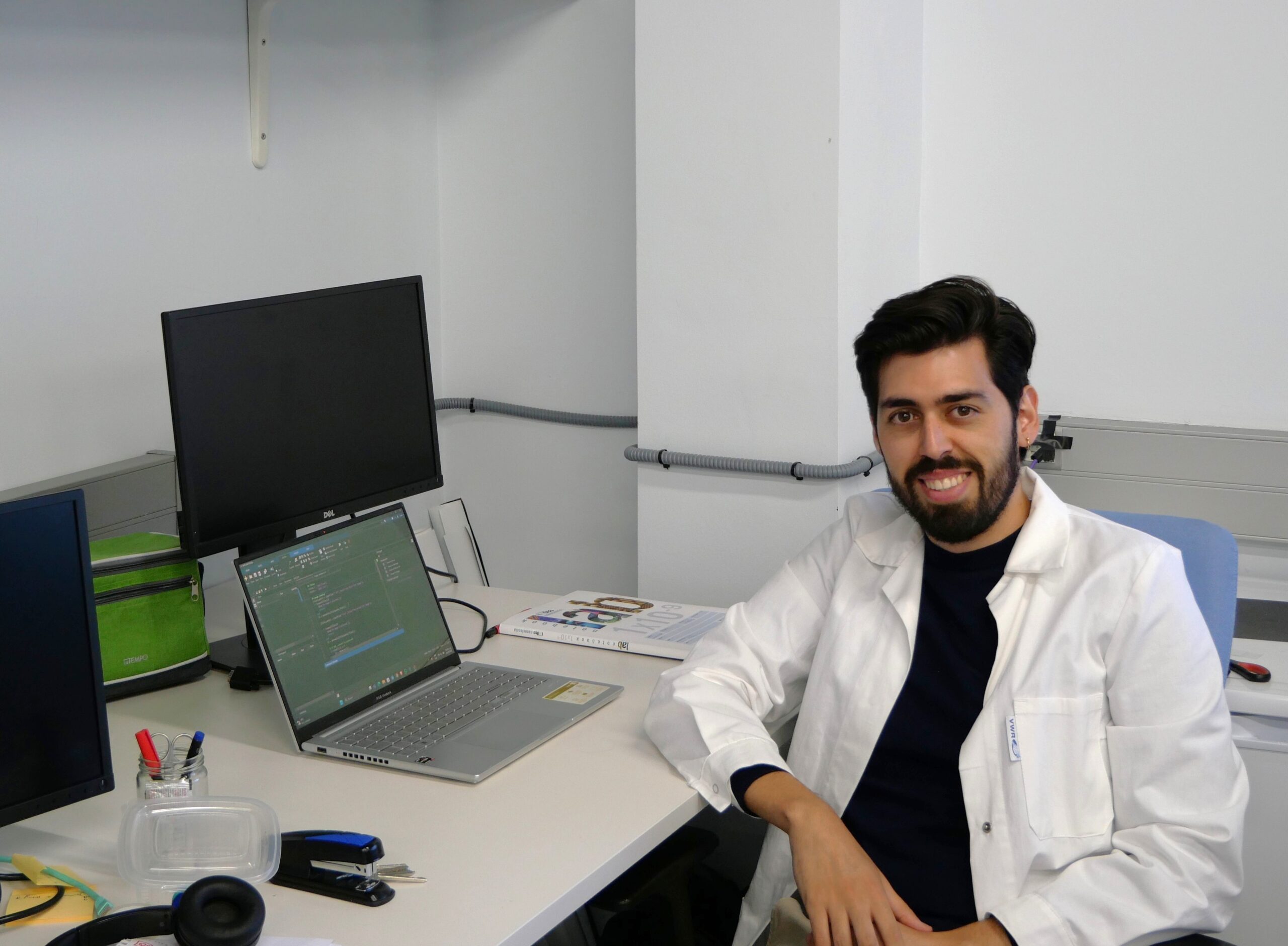
Luis Antonio Martínez
EDUCATION
Erasmus Mundus Joint Master Degree in Nuclear Physics [03/10/2022 – 19/09/2024] Autonomous University of Baja California [ 2016 – 2021]
Academic exchange student Republic’s University [08/2019 – 12/2019]
PROJECT
Intracellular temperature measurements
PI: Dr. Sebastian Thompson Parga.
Where do you come from?
I’m from a small port city called Ensenada, in Baja California, Mexico. I grew up there and completed my bachelor’s degree in Physics at the Autonomous University of Baja California, which is among the leading institutions in this field.
What are your main personal and professional concerns?
My main concern is the increasing precariousness of labor conditions across many fields, including science. In addition, the growing disconnect between science and society has fostered a certain arrogance within academia toward the broader community. Together, these issues have fueled rising inequality in access to resources and opportunities, depriving people of critical thinking skills and contributing to the spread of pseudo-science and self-help. Finally, the increasing corporatization and privatization of science, where everything revolves around deliverables, bureaucracy, and negotiations with business interests rather than genuine scientific inquiry, significantly limits both the quality and the potential of research.
What does your research consist on?
Broadly speaking, our goal is to improve glioblastoma treatment. We approach this challenge through three main strategies:
• Magnetic hyperthermia: By using magnetic nanoparticles, we can directly induce hyperthermia to trigger apoptosis in tumor cells.
• Blood–Brain Barrier (BBB) modulation: Hyperthermia can also be used to temporarily open the BBB. This is particularly relevant for drug delivery, as some drugs or radio/photo-sensitizers cannot be administered effectively due to their molecular size preventing them from crossing the BBB.
• Single Point Laser Photodynamic Therapy (SPL-PDT): By combining a laser with a dye, we can directly damage the cell membrane, inducing cell death. This emerging technique offers exciting possibilities for further exploration.
What power does science have to transform the world?
The nanoscale is the threshold where quantum properties begin to emerge, offering a new landscape to explore with applications in fields such as medicine, energy, and food production. In short, nanoscience holds the potential to address some of the most pressing challenges of our generation—from hunger to global warming.
Where do you find inspiration?
I have been very fortunate to be surrounded and supported by amazing people who have greatly contributed to my scientific career. Family, friends, and teachers have believed in me and provided me with the skills I needed to grow both personally and professionally, while also instilling in me a sense of responsibility not to let them down. This responsibility, together with my desire to contribute socially to my community, is what drives me to give my best in my career.
I also find inspiration in everyday life—in reality itself. By carefully observing the world around us, one can uncover intriguing questions, and by paying attention to society, one can identify pressing needs. Together, these aspects define both the questions we pursue and the goals we set.
Where do you see yourself in the future?
I aspire to continue my academic career and eventually lead my own research group. At the same time, I want to bring science back to communities, enabling everyone to engage with fundamental questions and work together in finding answers and contributing to the creation of a better world for all.
Why IMDEA Nanociencia?
At first, my main motivation was the research topic and line of work, which align closely with areas I feel comfortable and passionate about. Later, the institution itself became an additional factor, as IMDEA Nanoscience is among the leading research centers in Europe in the field of nanoscience. Once I joined, I realized the remarkable human quality of the people working here, as well as the opportunity to be part of a truly international environment with top researchers from around the world—something I deeply value and strongly resonate with.
